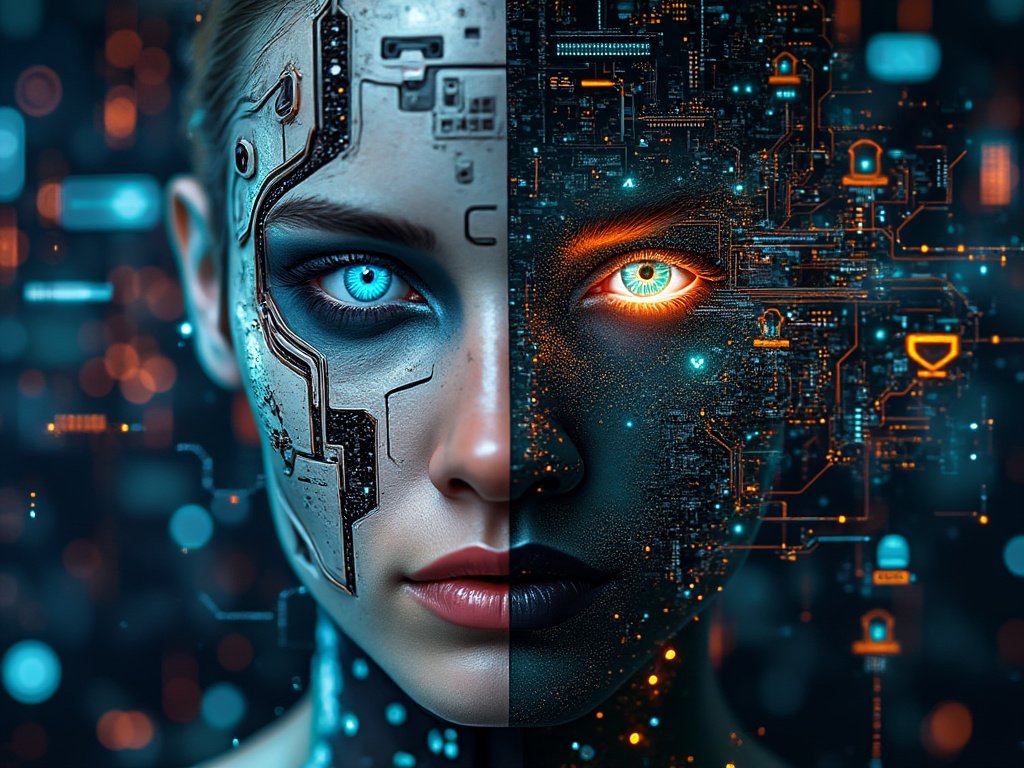In the not-so-distant past, artificial intelligence was largely confined to text-based interactions—chatbots answering FAQs, algorithms generating rudimentary copy, or recommendation engines suggesting your next binge-worthy series. But as we’ve moved beyond tools like ChatGPT, a new wave of innovation has emerged, one that promises to reshape creative work in ways previously unimaginable. Welcome to the era of multimodal AI , where machines no longer just talk but see, hear, interpret, and even imagine alongside humans.
The Evolution from Text to Multimodality
ChatGPT revolutionized natural language processing by enabling fluid conversations between humans and machines. However, its capabilities were inherently limited to text. Enter multimodal AI systems, which integrate multiple forms of data—text, images, audio, video, and more—into cohesive outputs. These systems don’t just process information; they synthesize it across formats, creating richer, more immersive experiences.
Take DALL·E, for instance. This groundbreaking tool doesn’t merely generate words—it creates visuals based on textual prompts. Need an image of “a futuristic cityscape at sunset with flying cars”? Done. Or consider Whisper, another OpenAI marvel, which transcribes speech into text while preserving nuances like tone and emotion. Together, these technologies form part of a broader ecosystem where creativity isn’t siloed but interconnected.
But why does this matter? Because creativity itself is inherently multimodal. Whether you’re writing a novel, designing a marketing campaign, or composing music, ideas rarely exist in isolation. They span mediums, blending visual elements with narrative arcs, and soundscapes with emotional beats. By bridging these gaps, multimodal AI becomes less of a tool and more of a collaborator—a partner capable of translating abstract concepts into tangible creations.
Redefining Creative Industries
1. Design and Visual Arts
For designers, illustrators, and artists, multimodal AI offers unprecedented flexibility. Tools like MidJourney and Adobe Firefly allow creators to experiment with styles, textures, and compositions without needing years of technical expertise. Imagine sketching a rough idea on paper, snapping a photo, and letting AI transform it into a polished digital masterpiece. Suddenly, barriers to entry are lowered, empowering hobbyists and professionals alike to push boundaries.
Moreover, AI-driven platforms can analyze trends in real-time, offering insights into what resonates with audiences. For example, if neon colors and retro aesthetics dominate social media feeds, AI can suggest design tweaks to align with current preferences—all while maintaining artistic integrity.
2. Writing and Publishing
Writers have long relied on their inner muses for inspiration, but now they have an external collaborator too. Multimodal AI can assist in everything from brainstorming plotlines to crafting vivid descriptions. Picture this: You describe a character’s personality traits, and AI generates a photorealistic portrait to accompany your prose. Or perhaps you input a scene description, and AI composes a hauntingly beautiful soundtrack to set the mood.
Even publishers benefit. With AI-powered editing tools, manuscripts can be refined faster than ever before, ensuring clarity, coherence, and grammatical precision. And let’s not forget translation services powered by multimodal models, breaking down linguistic barriers and expanding global reach.
3. Film and Entertainment
The film industry stands to gain immensely from multimodal AI. From pre-production storyboarding to post-production effects, AI streamlines workflows and enhances outcomes. Consider virtual production techniques using Unreal Engine combined with AI-generated assets. Filmmakers can visualize entire worlds in real-time, reducing costs and accelerating timelines.
Sound design also gets a boost. AI can analyze scripts to recommend musical scores or ambient sounds that heighten emotional impact. It can even mimic iconic voices or create entirely new ones, opening up possibilities for voice acting and dubbing.
Challenges and Ethical Considerations
Of course, with great power comes great responsibility. As multimodal AI blurs the line between human and machine creativity, ethical questions arise. Who owns the rights to AI-generated content? Can AI truly replicate cultural sensitivity, or does it risk perpetuating biases embedded in training data? And what happens when automation threatens jobs traditionally held by creatives?
These concerns aren’t hypothetical—they’re already shaping policy debates worldwide. Some argue for stricter regulations to protect intellectual property, while others advocate for open-source frameworks to democratize access. Striking a balance will require collaboration among technologists, policymakers, and artists themselves.
A New Paradigm for Creativity
Despite challenges, the potential of multimodal AI to enhance—not replace—human creativity cannot be overstated. It democratizes access to tools once reserved for elites, fosters cross-disciplinary innovation, and encourages experimentation. In doing so, it invites us to rethink what it means to be creative.
Imagine a future where filmmakers collaborate with AI to produce Oscar-winning blockbusters, authors co-author novels with machine partners, and musicians compose symphonies augmented by algorithmic harmonies. Far from rendering human ingenuity obsolete, multimodal AI amplifies it, pushing the boundaries of what’s possible.
So, as we stand on the cusp of this transformative age, one thing is clear: The question isn’t whether AI will reshape creative work—it already is. The real question is how we choose to harness its power. Will we use it to elevate artistry, foster inclusivity, and inspire wonder? Or will we let fear and uncertainty hold us back?
The canvas is vast, the palette endless. Let’s paint boldly.




